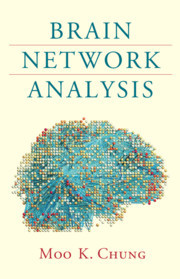Description
Brain Network Analysis
Author: Chung Moo K.
This coherent mathematical and statistical approach aimed at graduate students incorporates regression and topology as well as graph theory.
Language: English
Subject for Brain Network Analysis:
Publication date: 06-2019
338 p. · 15.6x23.5 cm · Hardback
338 p. · 15.6x23.5 cm · Hardback
Description
/li>Contents
/li>Biography
/li>
This tutorial reference serves as a coherent overview of various statistical and mathematical approaches used in brain network analysis, where modeling the complex structures and functions of the human brain often poses many unique computational and statistical challenges. This book fills a gap as a textbook for graduate students while simultaneously articulating important and technically challenging topics. Whereas most available books are graph theory-centric, this text introduces techniques arising from graph theory and expands to include other different models in its discussion on network science, regression, and algebraic topology. Links are included to the sample data and codes used in generating the book's results and figures, helping to empower methodological understanding in a manner immediately usable to both researchers and students.
1. Statistical preliminary; 2. Brain network nodes and edges; 3. Graph theory; 4. Correlation networks; 5. Big brain network data; 6. Network simulations; 7. Persistent homology; 8. Diffusion on graphs; 9. Sparse networks; 10. Brain network distances; 11. Combinatorial inference for networks; 12. Series expansion of connectivity matrices; 13. Dynamic network models.
Moo K. Chung is an Associate Professor in the Department of Biostatistics and Medical Informatics at the University of Wisconsin, Madison and is also affiliated with the Department of Statistics and Waisman Laboratory for Brain Imaging and Behavior. He has received the Vilas Associate Award for his research in applied topology to medical imaging, the Editor's Award for best paper published in the Journal of Speech, Language, and Hearing Research for a paper that analyzed CT images, and a National Institutes of Health (NIH) Brain Initiative Award for work on persistent homological brain network analysis. He has written numerous papers in computational neuroimaging and two previous books on computation on brain image analysis.
© 2024 LAVOISIER S.A.S.

